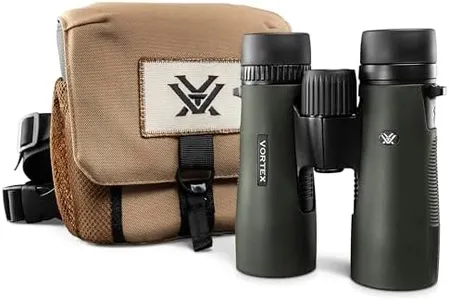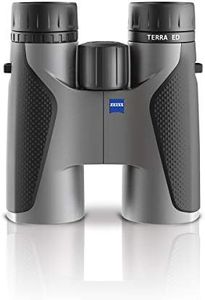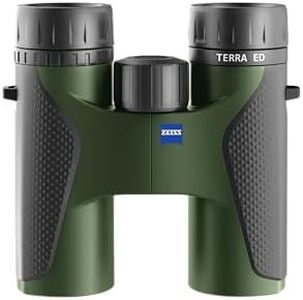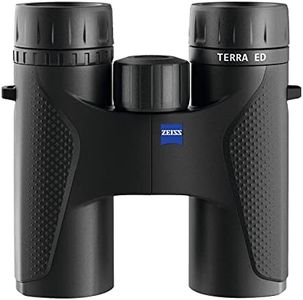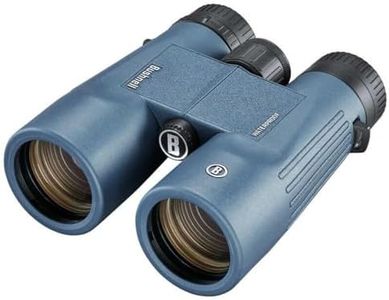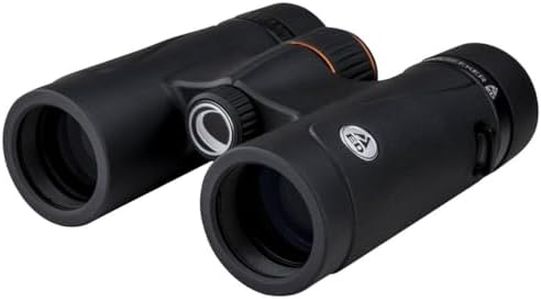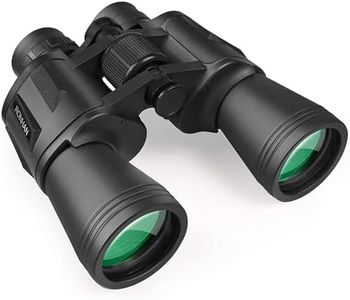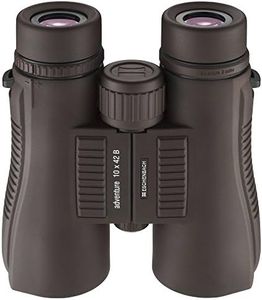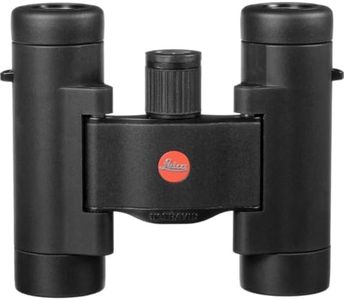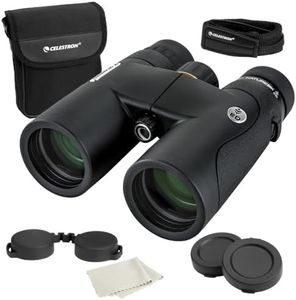We Use CookiesWe use cookies to enhance the security, performance,
functionality and for analytical and promotional activities. By continuing to browse this site you
are agreeing to our privacy policy
10 Best Birds Binoculars
From leading brands and best sellers available on the web.By clicking on a link to a third party's website, log data is shared with that third party.
Buying Guide for the Best Birds Binoculars
When choosing binoculars for birdwatching, it's important to find a balance between magnification, clarity, comfort, and ease of use. Birding often happens in varied lighting and environments, so selecting binoculars that enhance your viewing experience without being too heavy or complex is key. Focus on the features that match how, where, and when you plan to observe birds, keeping in mind what feels comfortable for extended use in the field.Magnification and Objective Lens DiameterThis refers to the two numbers often seen on binoculars, like 8x42 or 10x50; the first is magnification (how much closer objects appear), and the second is the size of the front lens in millimeters (which affects brightness). Higher magnification brings birds closer but can make images shakier and your field of view narrower, while a larger lens lets in more light, which is great for early morning or evening birding but can make binoculars heavier. For most birdwatchers, something in the 8x to 10x range and a lens around 32-42mm offers a good mix of image detail, stability, and brightness.
Field of ViewThis is how wide an area you can see through the binoculars, usually measured in feet at 1000 yards or meters at 1000 meters. A wider field of view helps you spot and follow small, fast-moving birds more easily, while a narrower field is more suited for distant, stationary objects. For birding, a wider field of view is typically preferable so you can track flying or active birds without losing them from sight.
Close Focus DistanceClose focus distance tells you how close to you the binoculars can focus sharply, measured in feet or meters. If you enjoy watching birds (or even insects) at feeders, gardens, or close-range environments, a short close focus distance (under 2 meters or about 6 feet) is ideal. For those mostly observing birds at a distance, this is less critical, but for up-close viewing, it's a must.
Weight and SizeThe physical weight and dimensions of binoculars can determine how comfortable they are to carry and use for long periods. Lighter, more compact binoculars are easier to hold steady, especially if you plan to hike or travel long distances, but they may compromise on brightness or durability. If you value comfort and like to birdwatch for hours or on the move, prioritize portable, ergonomic designs.
Water and Fog ProofingBirdwatching often happens outdoors where weather can be unpredictable. Binoculars with water and fog proofing (usually achieved by sealing and gas-filling) will resist moisture, dust, and internal fogging. If you're birding in wet, humid, or variable climates, choosing binoculars advertised as waterproof and fogproof ensures they will last longer and remain clear to use.
Eye ReliefEye relief describes how far back you can hold the binoculars from your eyes and still see the full image, important for eyeglass wearers. Longer eye relief (often over 15mm) means you can use binoculars comfortably even with glasses on. If you wear glasses or sunglasses often, make sure to check for generous eye relief for a full and comfortable view.
Optical Quality and CoatingsThe quality of the glass and the presence of special coatings on the lenses affect how bright, sharp, and true-to-color your view will be. Fully multi-coated lenses and high-quality prisms reduce glare and increase contrast and brightness, which is crucial during dawn, dusk, or in shaded woods. If you seek vibrant details and comfortable, strain-free viewing, pay attention to these features in the product details.
